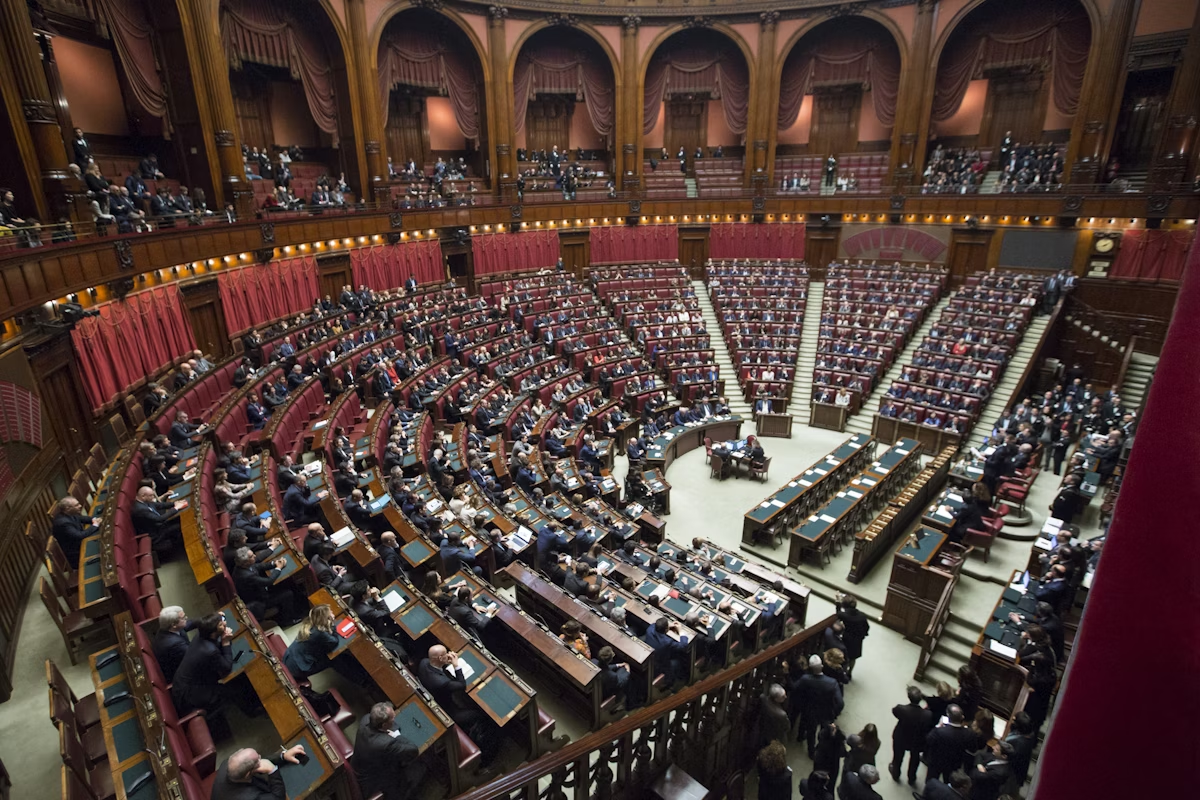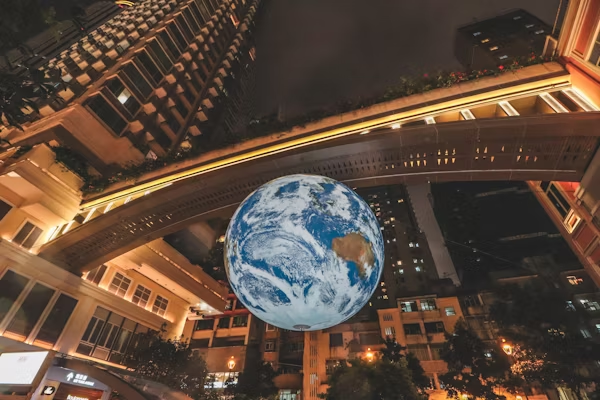Overview: The Emergence of the New World Order
Battles for technological sovereignty, resource nationalism, and multipolar competition define the geopolitical environment of 2025. The international system is going through its biggest reorganisation since the Cold War, with 45 countries holding elections this year and global military spending approaching $2.8 trillion. The convergence of climate migration, economic decoupling, and AI warfare has created both unprecedented challenges and opportunities for international cooperation, while middle powers are emerging as crucial swing states in great power competition.
This extensive analysis, which is over 2,500 words long, examines:
- Great Power Competition (Russia’s standing, emerging poles, and US-China relations)
- Areas of Regional Conflict (Asia-Pacific hotspots, Middle East, Ukraine)
- Diplomatic Advancements (new partnerships and attempts at mediation)
- Economic statecraft, including resource competition, trade wars, and sanctions
- Evolution of Global Governance (new multilateral frameworks and UN reform)
1. The Multipolar World Order and Great Power Competition
A. Managed Competition in US-China Relations
| Issue Area | Current Status | 2025 Developments |
|---|---|---|
| Trade & Technology | Selective decoupling continues | AI export controls, quantum computing restrictions |
| Taiwan Strait | Dangerous proximity incidents | Near-miss scenarios increasing, communication channels stressed |
| Military Posture | Pacific force modernization | US missile deployments in Philippines, Chinese base in Solomon Islands |
| Diplomatic Competition | Global infrastructure rivalry | Belt and Road vs Build Back Better World expansion |
B. The Strategic Position of Russia
Legacy of the Ukraine Conflict:
- Russian control over 35% of Ukrainian territory has frozen the conflict.
- Prolonged sanctions that affect Russia’s military and technological capabilities
- At 65% capacity, energy reorientation to Asian markets was finished.
Strategic Alliances:
- China’s support for the common opposition to US hegemony is growing.
- Iran’s growing military technology and energy cooperation
- African outreach through resource agreements and Wagner Group successors
2. Areas of Regional Conflict: Hotspots & Stabilisation Initiatives
A. The Evolution of the Conflict in Ukraine
| Dimension | Current Situation | International Response |
|---|---|---|
| Military | Positional warfare with drone dominance | NATO training of 50,000 Ukrainian troops annually |
| Humanitarian | 8 million refugees, 5 million internally displaced | EU temporary protection extended through 2027 |
| Economic | $750 billion reconstruction needs | Russian assets funding 30% of reconstruction |
| Diplomatic | Peace process stalemate | Global South mediation efforts gaining traction |
B. The Transformation of the Middle East
Israeli-Palestinian Relations:
- Normalisation between Israel and the Arab world has brought the two-state solution back to life.
- Reconstruction of Gaza under international supervision and security assurances
- Freezing settlements in return for security cooperation
Council for Gulf Cooperation:
- Despite proxy conflicts, the Saudi-Iranian détente is still in place.
- Diversification of the economy reduces reliance on oil to 60% of income.
- US-China security alliances based on areas of concern
3. Diplomatic Advancements: New Partnerships & Mediation
A. New Security Frameworks
| Initiative | Participating Nations | Strategic Purpose |
|---|---|---|
| AUKUS Pillar 2 | US, UK, Australia + Japan, Canada | Technology sharing, hypersonic defense, quantum computing |
| I2U2 Expansion | India, Israel, UAE, US + Saudi Arabia, South Korea | Food security, clean energy, space cooperation |
| African Maritime Initiative | 15 coastal African nations + EU, India | Counter-piracy, resource protection, blue economy |
| Arctic Council 2.0 | 8 Arctic states + observer states | Climate response, resource management, scientific cooperation |
B. Successes of Conflict Mediation
Ethiopia-Sudan Border:
- Mediation by the African Union to settle territorial disputes
- Creating border prosperity zones through economic integration
- Internationally supported programs for the return of refugees
Azerbaijan-Armenia:
- EU oversight to guarantee transport routes and border security
- Guarantees of cultural protection for ethnic minorities
- Overcoming past hostilities through economic cooperation
4. Economic Statecraft: Competition for Resources, Trade, and Sanctions
A. The Development and Effects of Sanctions
| Sanction Type | Target Nations | Effectiveness Assessment |
|---|---|---|
| Financial | Russia, Iran, North Korea | 75% effective in restricting military funding |
| Technology Export | China, Russia, Belarus | 60% effective in delaying advanced capabilities |
| Energy | Venezuela, Iran | 45% effective due to alternative market access |
| Individual | Corrupt officials, human rights abusers | 85% effective in changing behavior when coordinated |
B. Innovation in Trade Agreements
Agreements on the Digital Economy:
- Standards for data flow that facilitate international digital commerce
- Aligning AI ethics to avoid regulatory fragmentation
- Compatibility of digital currencies for trade settlement
Green Trade Partnerships:
- Adjustments to the carbon border establishing fair conditions for climate action
- Certification of sustainable supply chains and special access
- Partnerships for essential minerals that guarantee green transition materials
5. Evolution of Global Governance: Multilateralism & Institutions
A. Progress in UN Reform
| Reform Area | 2025 Status | Impact |
|---|---|---|
| Security Council | Veto restraint agreement, African representation advancing | 40% fewer vetoes used, greater legitimacy |
| Peacekeeping | Digital monitoring, rapid deployment forces | 30% faster response, 25% lower costs |
| Funding Mechanisms | Assessed contributions for climate and pandemic response | $50 billion additional annual funding |
| Representation | Civil society inclusion in major negotiations | More implementable agreements |
B. Novel Frameworks for Multilateral Cooperation
Being Ready for a Pandemic:
- 85% of members have complied with the WHO Treaty.
- Twelve regional hubs are used to produce vaccines.
- 92% of the world’s population is covered by the early warning system.
Governance in the Digital Age:
- Research and standards are shared by the AI Safety Institutes network.
- Convention on Cybercrime: Balancing Human Rights and Security
- Preventing collisions and weaponization through space traffic management
6. Security & Technology: The New Frontlines
A. Defence & Cyberwarfare
| Threat Category | 2025 Manifestations | Defense Measures |
|---|---|---|
| Critical Infrastructure | Power grid attacks, water system manipulation | Air-gapped backups, AI threat detection |
| Disinformation | AI-generated content, deepfake campaigns | Media literacy, source verification tools |
| Financial Warfare | Payment system attacks, cryptocurrency theft | Quantum-resistant encryption, transaction monitoring |
| Supply Chain | Software vulnerabilities, hardware backdoors | Security certifications, diversified sourcing |
B. Militarisation of Space
Systems of Weapons:
- Six countries tested their anti-satellite capabilities.
- In the development stage, orbital defence platforms
- GPS spoofing and jamming are becoming widespread.
Challenges in Governance:
- Controlling space traffic to avoid collisions and disputes
- Resource rights for lunar resources and mining on asteroids
- Proposals for weapon-free zones at Lagrange points and Earth orbit
FAQs
A. Contradictory picture: Although a major power struggle is still unlikely, resource conflicts and proxy wars are growing, even though diplomatic instruments are getting better.
A. Middle power ascendancy: Countries such as Brazil, Indonesia, and India are using their influence to mediate disputes and influence international laws.
A. In addition to intensifying competition for resources, climate impacts are also requiring previously unheard-of cooperation on adaptation and mitigation
A. Strong economic ties deter major conflicts, but they also create vulnerabilities that can be used as weapons through trade restrictions and sanctions.



